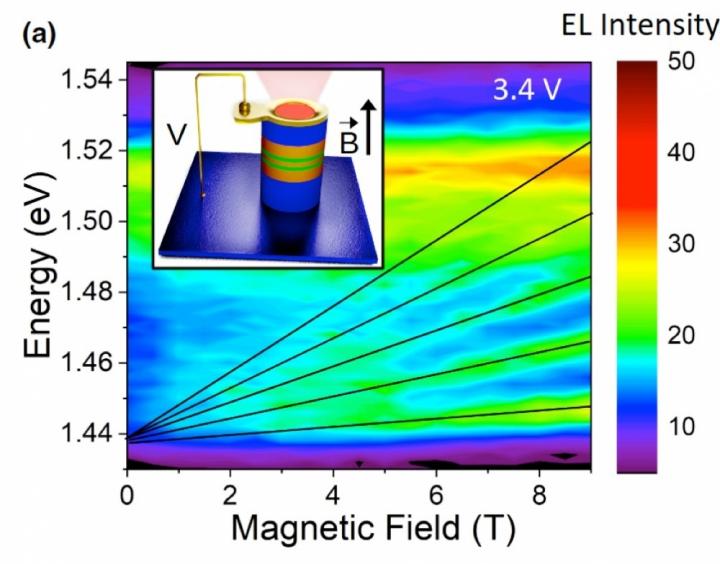Scientists delve into resonant tunneling diodes

Study of charge buildup and dynamics in RTDs could lead to more efficient optoelectronics
Resonant-tunneling diodes (RTDs) are among the fastest semiconductor devices and are used in countless applications such as high-frequency oscillators in the terahertz band, wave emitters, wave detectors, and logic gates. RTDs are also sensitive to light and can be used as photodetectors or optically active elements in optoelectronic circuits.
Scientists from the Federal University of São Carlos in Brazil and the University of Würzburg in Germany, have recently been looking at the charge buildup and dynamics in RTDs throughout the applied voltage range by studying the magneto-transport and magnetoelectroluminescence properties of purely n-doped GaAs/Al0.6Ga0.4As resonant-tunneling diodes with an In0.15Ga0.85As quantum well and an emitter pre-well.
They beliefve their work may help towards developing novel RTDs with optimised charge distribution to enhance photodetection efficiency or to minimise optical losses.
RTDs consist of two potential barriers separated by a layer that forms a quantum well. This structure is sandwiched between extremities formed by compound semiconductors with a high concentration of electrical charges, which are accelerated when a voltage is placed across the RTD.
The tunnel effect occurs when the energy in the electrical charges accelerated by application of the voltage coincides with the quantised energy level in the quantum well.
"As the voltage is applied, the energy of the electrons retained by the barrier increases, and at a specific level, they are able to cross the forbidden region. However, if an even higher voltage is applied, the electrons can no longer get through because their energy exceeds the quantized energy in the well,” said Marcio Daldin Teodoro, a professor in the Physics Department of the Federal University of São Carlos (UFSCar), in the state of São Paulo, Brazil.
Teodoro was the principal investigator for a study that determined charge buildup and dynamics in RTDs throughout the applied voltage range. A paper 'Determination of carrier density and dynamics via magneto-electroluminescence spectroscopy in resonant-tunneling diodes' describing the study is published in Physical Review Applied.
“The operation of RTD-based devices depends on several parameters, such as charge excitation, accumulation and transport, and the relationships among these properties,” Teodoro said.
“Charge carrier density in these devices has always been determined before and after the resonance area, but not in the resonance area itself, which carries the key information. We used advanced spectroscopy and electronic transport techniques to determine charge accumulation and dynamics throughout the device. The tunneling signature is a peak current followed by a sharp drop to a specific voltage that depends on the RTD’s structural characteristics.”
Magnetic field
Previous studies measured charge carrier density as a function of voltage using the magneto-transport technique, which correlates current intensity and magnetic field. However, magneto-transport tools may not be able to characterise charge accumulation throughout the operating range, and there can be blind spots for certain voltage values. As a result, the researchers also used a technique called magneto-electroluminescence, which investigates the light emission induced by the voltage applied as a function of the magnetic field.
“Magneto-electroluminescence enabled us to study voltage bands that were magneto-transport blind spots. The results matched at points where charge density can be measured by both techniques,” said Edson Rafael Cardozo de Oliveira, first author of the paper. “These two experimental techniques proved complementary for a complete investigation of charge density across the entire RTD operating voltage range.”
“The study can guide further research on RTDs, potentially leading to the production of more efficient optoelectronic devices,” he said. “By monitoring charge buildup as a function of voltage, it will be possible to develop novel RTDs with optimised charge distribution to enhance photodetection efficiency or minimise optical losses.”
Because RTDs are such complex structures, knowing how charges are distributed in them is important. “We now have a more complete map of RTD charge distribution,” said Victor Lopez Richard, a professor at UFSCar and a co-author of the paper.


































